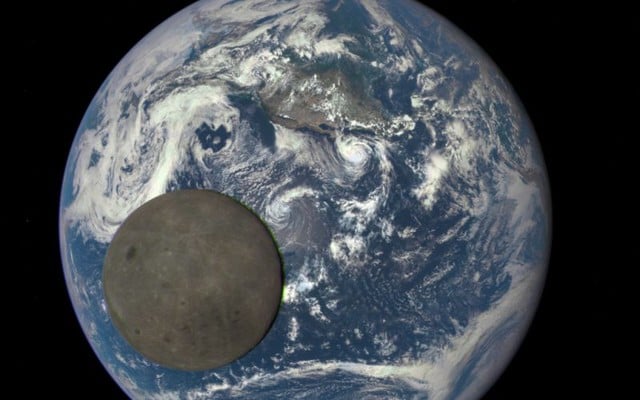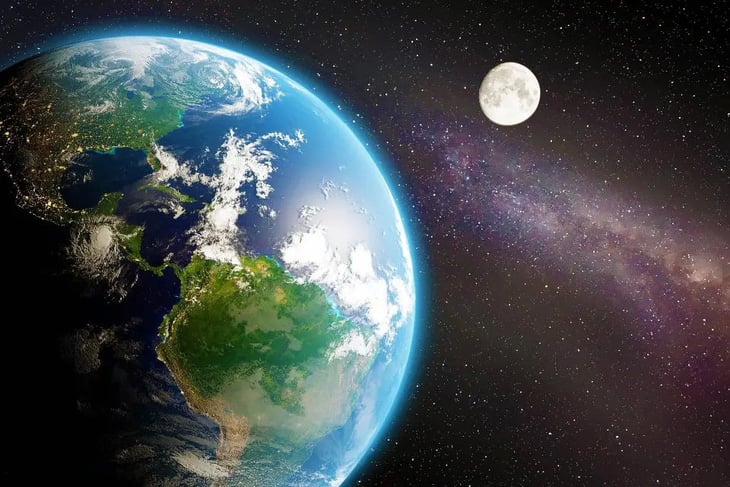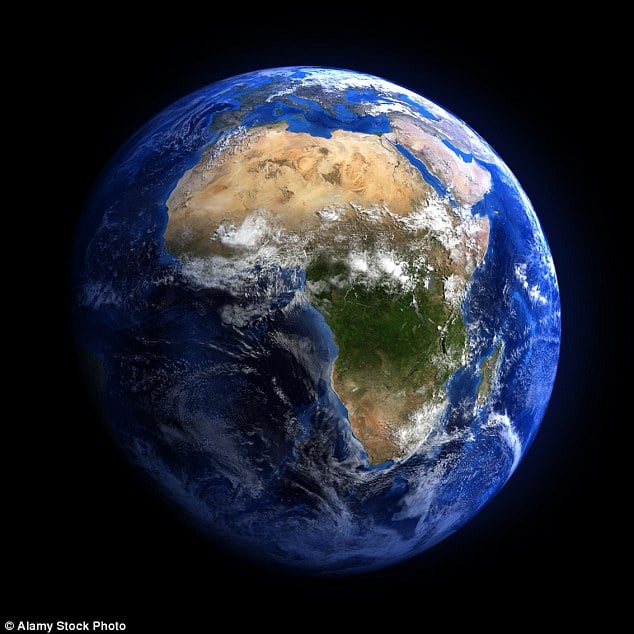The day will get longer

The Moon is moving further and further away from the Earth.
Researchers have discovered that the Moon is moving further away from Earth, and this will cause our planet to rotate slower, making the days longer.
Published research suggests that around 1.4 billion years ago, a day on Earth was just 18 hours long. This was partly due to the moon being closer and affecting the way the Earth rotated on its axis.
According to the Telegraph, the moon is currently moving away from Earth at a rate of about 3.82 cm a year. This means that in about 200 million years, we will reach a time when each day on Earth is 25 hours long.

The movement of the Moon can affect the length of a day on Earth - Photo: ERARTH.COM
“As the Moon moves away, the Earth is like a figure skater who slows down as he or she stretches his or her arm out,” explained Stephen Meyers, a professor of geological sciences at the University of Wisconsin-Madison and co-author of the study.
That's because the Earth's motion is partly determined by the entities around it, like other planets and the Moon, which exert forces on it.
Variations in this force can affect the Earth's orbit around the Sun as well as its rotation around itself. These variations, called Milankovich cycles, determine how sunlight is distributed on Earth, which in turn determines Earth's rotation rate and climate.
Over billions of years, time on Earth has changed significantly as the solar system has many moving parts, including other planets revolving around the Sun.
When does a day have 25 hours?

Illustration photo.
But when will a 25-hour day happen? Scientists say about 200 million years from now. That shouldn’t surprise many people, since it’s happened before. In fact, 1.4 billion years ago, a day was 18 hours and 41 minutes long, and during the time of the dinosaurs, a day was 23 hours long.
Research related to the movement of the Moon was conducted by a group of professors at the University of Wisconsin-Madison (USA). They found that the Moon is gradually moving away from Earth at a speed of 3.81cm/year.
As the Moon moves farther away, the Moon's changing gravitational effect on the Earth slows down the Earth's rotation, thereby making a day on Earth longer.
"As the Moon moves away, the Earth is like a figure skater slowing down as they extend their arms," explains geologist Stephen Meyers, a professor at the University of Wisconsin-Madison and lead researcher.
However, according to Professor Stephen Meyers, the speed of 3.81cm/year is very slow. If this speed is maintained, it is estimated that it will take about 200 million years for a day on Earth to last 25 hours.
At some point, the Moon will reach a stable distance and only one side will be visible from Earth.
Readers are invited to watch videos of interest on Family and Society.
Experts guide on how to calculate the cost of converting non-agricultural land to residential land in 2024
Source: https://giadinh.suckhoedoisong.vn/khi-nao-mot-ngay-tren-trai-dat-dai-25-tieng-172240819083938051.htm






![[Photo] Unique architecture of the deepest metro station in France](https://vphoto.vietnam.vn/thumb/1200x675/vietnam/resource/IMAGE/2025/11/14/1763107592365_ga-sau-nhat-nuoc-phap-duy-1-6403-jpg.webp)
![[Photo] Unique art of painting Tuong masks](https://vphoto.vietnam.vn/thumb/1200x675/vietnam/resource/IMAGE/2025/11/14/1763094089301_ndo_br_1-jpg.webp)






























![[Photo] Special class in Tra Linh](https://vphoto.vietnam.vn/thumb/1200x675/vietnam/resource/IMAGE/2025/11/14/1763078485441_ndo_br_lop-hoc-7-jpg.webp)












































































Comment (0)